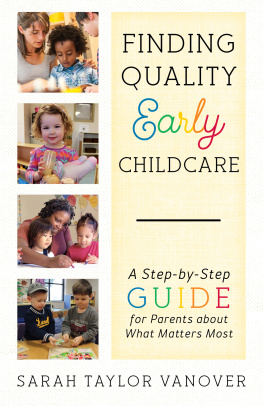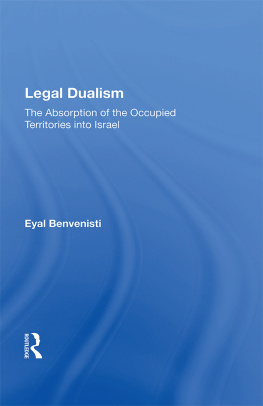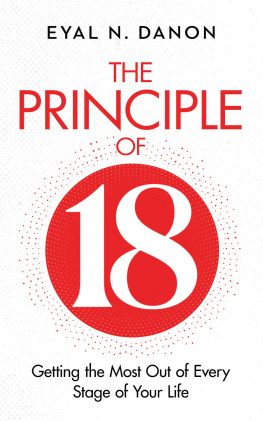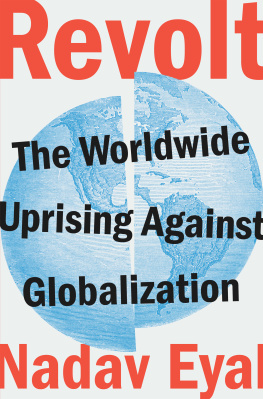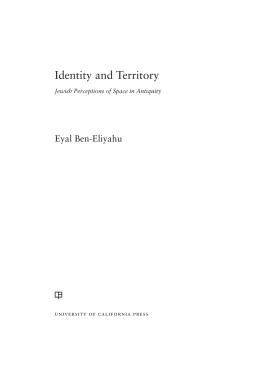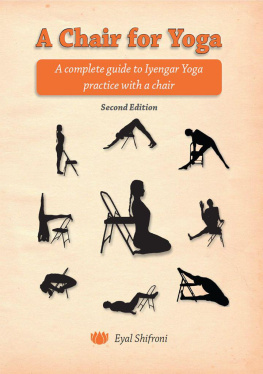Body Projects in Japanese Childcare
Body Projects in Japanese Childcare
Culture, Organization and Emotions in a Preschool
Eyal Ben-Ari
First published in 1997
by Curzon Press
Published 2013 by Routledge
2 Park Square, Milton Park, Abingdon, Oxon OX14 4RN
711 Third Avenue, New York, NY, 10017, USA
Routledge is an imprint of the Taylor & Francis Group, an informa business
1997 Eyal Ben-Ari
Typeset in Garamond by LaserScript, Mitcham, Surrey
Chapter 3 was previously published in Ethos 24(1), 1996. Permission to reprint was kindly given by the Psychological Section of the American Anthropological Association.
All rights reserved. No part of this book may be reprinted or reproduced or utilised in any form or by any electronic, mechanical, or other means, now known or hereafter invented, including photocopying and recording, or in any information storage or retrieval system, without permission in writing from the publishers.
British Library Cataloguing in Publication Data
A catalogue record for this book is available from the British Library
ISBN 13: 978-0-700-70448-4 (hbk)
This book is dedicated to my father and the memory of my mother
Contents
My first debt is to the children and the staff of Katsura Day-Care Center. These people accepted and shared their lives with me. The centers director Nakae-sensei always proved patient and helpful. The centers head teacher Yuko Yoshimura was especially kind and has since also become a good friend.
This book was written during a sabbatical leave spent at The Department of Japanese Studies of the National University of Singapore, and later at The Department of Sociology and Anthropology of the Hebrew University. I am grateful to my colleagues and the administrative staff at these departments for providing very congenial and supportive conditions in which to work.
Earlier versions of some chapters were presented at a variety of seminars at the Department of Sociology and Anthropology of the Hebrew University, the Department of Sociology and Anthropology of Bar-Ilan University, the Department of Educational Policy at the University of Wisconsin, Madison, the Japanese Studies Centre of School of Oriental and African Studies, the Department of Japanese Studies at the National University of Singapore, and at a meeting of the European Association of Japanese Studies in Berlin. I would like to thank participants at these seminars for comments, and especially Efrat Ben-Zeev, Sarit Helman, Ilana Litwin, Pamela Lubell, Chihiro Thomson, and Timothy Tsu for their detailed suggestions. I would especially like to thank Susan Sared for her insights and support. was originally presented at a workshop on Transformations in Contemporary East Asia held to honor the retirement of Professors Zvi Schiffrin and Al Altman of the Hebrew University.
Financial assistance for this project was kindly provided by the Harry S. Truman Research Institute of the Hebrew University of Jerusalem, and the Otsuki Peace Fund of the Japan Friends of Israel (Kyoto).
My two sons experience in various day-care centers in Israel, England and Japan spurred me towards this research project and always kept me wondering about the special magic of growing up. Throughout my work I have had a constant partner for support, discussion and the exchange of ideas: thank you, Edna.
A Note on Language
All Japanese words are romanized according to the modified Hepburn system. Long vowels, however, are rendered as a double letter rather than with a superscript bar.
Peoples names are given in the Japanese order with the personal name following the patronym. Names of prefectures, cities, and references have been rendered without long vowels.
Chapter 1
Introduction
This book examines the place of body practices and the management of emotions in Japanese preschools. I proceed from the following, rather simple, proposition: while a host of very good studies of Japanese preschools have been published in the past decade, these works tend to overlook a number of key issues related to embodiment and to affects. Borrowing from Featherstone (1991; also Fruhestueck 1994), I propose to explore early childhood socialization as a set of body projects: a series of practices undertaken (over time) to design the body according to prevailing cultural definitions and images. The concept body projects allows us to understand how the body is, at one and the same time, a malleable material good capable of being fashioned in a certain manner, an entity which represents social relations and notions, and an embodiment of affective attitudes and stances towards the world. To be sure, body projects can be seen as individual undertakings in which people intentionally fashion their physical frame to conform to accepted social notions. But the intriguing question in regard to such projects in preschools involves the organizational schemes that use the body in enculturating children. The analytical challenge then, is to uncover the procedures and methods utilized by such institutions to fashion childrens physical forms and emotional postures and attitudes.
This volume tackles this set of themes by examining one institution of early childhood education: Katsura Hoikuen (Day-Care Center). Based on fieldwork carried out in the summer of 1988 and (for a short while) in the fall of 1994, my perspective is basically ethnographic in its approach. In order to situate my study in relation to contemporary scholarship of the body and of Japanese preschools, and in order to clearly identify the issues I have singled out for analysis, let me answer three questions in the framework of this introduction: why the focus on body practices and emotions? Why day-care centers? And why the specific case I have chosen to study?
From Cognition to Embodiment
There have been two waves of post-war research by Western scholars on childhood socialization in Japan. The first wave of studies which was published in the 1950s and 1960s focused on the family and the home. These studies dealt with such issues as motivation (De Vos 1973; 1986), personality (Lanham 1966; 1986), or infant-mother relations (Caudill and Weinstein 1969; Caudill and Plath 1986). Most (but not all) of these studies appear to have been grounded in one or a combination of two grand approaches: the culture and personality school as evinced in Benedicts (1746) classic volume and various versions of modernization theory (De Vos 1773; Vogel 1963).
The second wave of studies, which began during the late 1970s, continued to concentrate on families (for instance, Hess et al. 1980; Conroy et al. 1780; Fuller et al. 1786; Tanaka 1984), but added a new interest in preschools, in institutions of early childhood education. The rationale underlying these later studies was empirical and theoretical. On the one hand, scholars directed their attention to the extent and prevalence of such institutions. With about 95 per cent of children who enter first grade having attended kindergartens (yoochien) or day-care centers (hoikuen) (Tobin et al. 1987: 70) preschool is now nearly a universal experience for Japanese youngsters. On the other hand, the focus on preschools grew out of a recognition that as the exposure to formal education in preschool was a formative experience influencing childrens later schooling, an examination of this experience would provide insights into how Japanese people gain abilities to carry out various social roles throughout their lives (Rohlen 1789a; 1787b).





